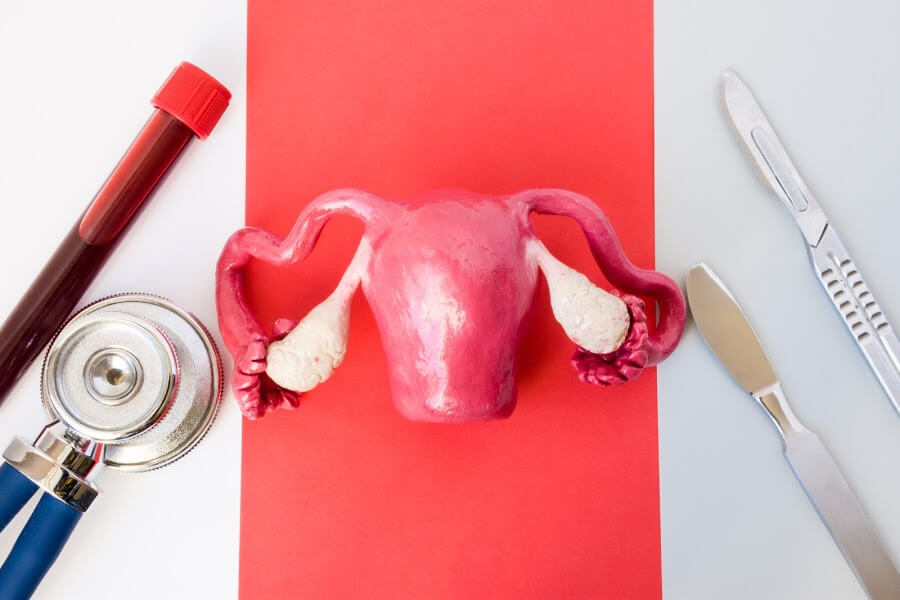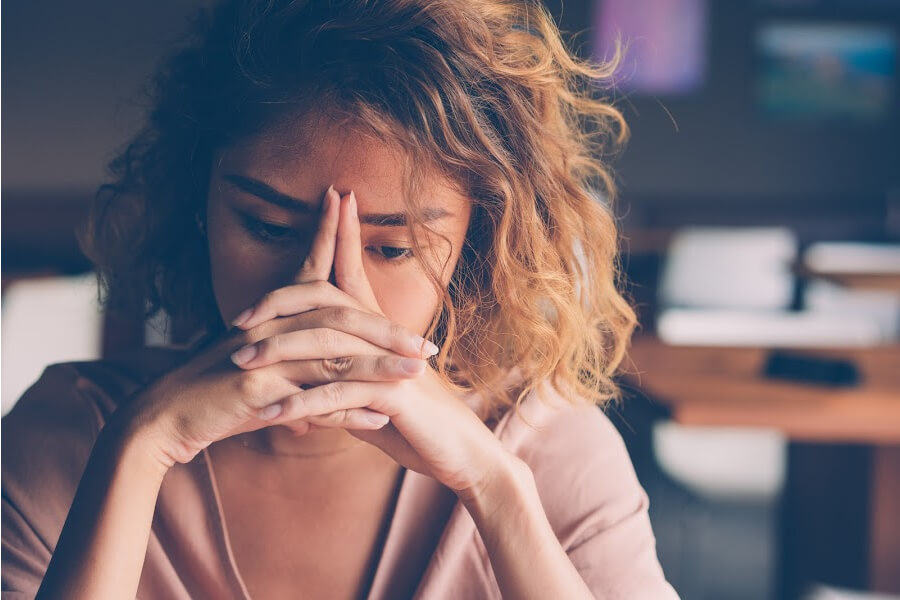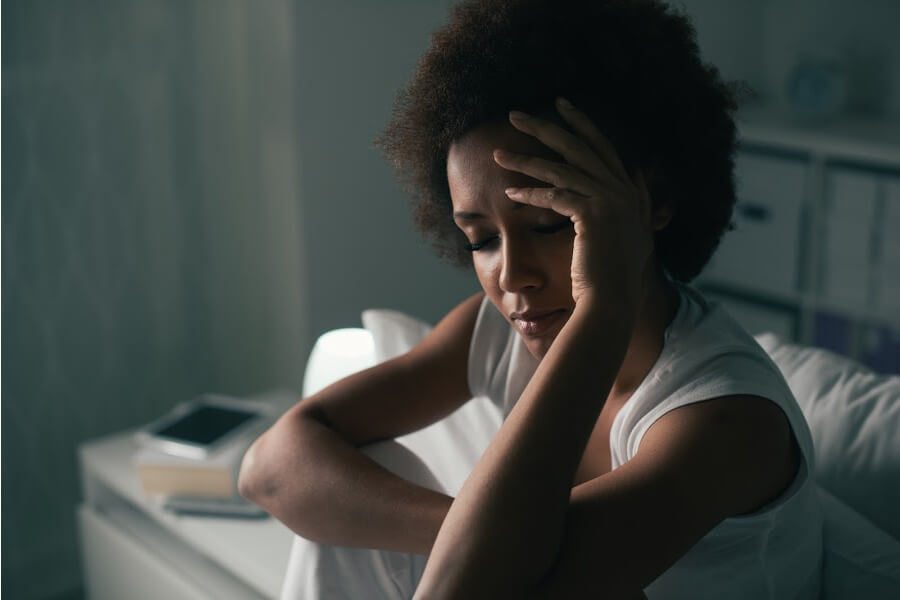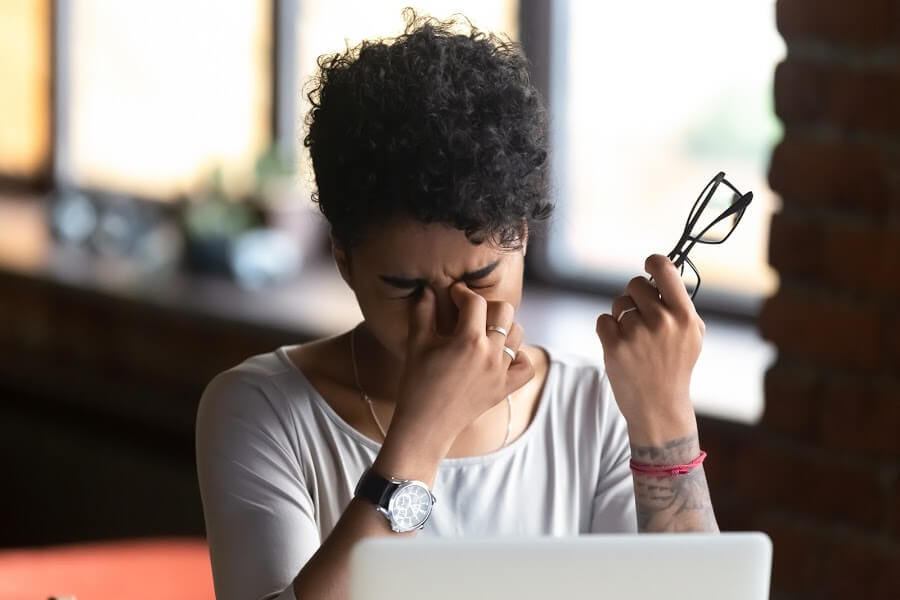TRIGGER WARNING: this article talks about assault and abuse, sometimes in sexual contexts.
Doctors vs Holistic Practitioners? Natural Enemies Or Can You Integrate The Two?
One thing that causes a lot of tension in the health and wellness industry is the distrust and dismissal of doctors and standard western medical practices. I can understand how this has come about; I have had my fair share of run ins with dismissive and downright rude doctors in the past.
And yet, I have come across some of the most compassionate doctors who have quite literally saved my life on several occasions. I also find it difficult to reconcile the friends that I have who have become doctors with some of the view points I have seen reflected in social media sometimes.
The result is that I have found it difficult to know where to tow the line the past and I know it causes confusion in many of my clients too. They of course defer on someone with a medical degree when they are feeling unwell, but then why can’t said doctor get them referred for endometriosis or fertility testing?
Why are they passed around from pillar to post with no answers? Why are they told that their thyroid is fine when clearly they are a walking cliche for hypothyroidism? Why are they told gluten is fine, yet every time they eat it, they have a reaction?
Why are they told it is them that is the problem when each birth control pill and IUD causes a bad reaction and that they just need to check they are taking it properly, or that they have to keep going through all the side effects until something works as expected?
Why does it take 7.5 years to get an endometriosis diagnosis? Why do doctors poo poo nutrition or tell them that food makes no difference to period problems?
These are good questions and this is something I have looked into in order to to wake myself up to any biases or preconceptions I may have, both when referring clients to doctors and ensuring that I believe clients stories and don’t dismiss anything they may have told me.
I have to be honest, there are people in the health and wellness industry who are making money selling cures and solutions that are made up and take advantage of desperate people who are not getting the answers they need elsewhere.
I once confronted one of these at a health show where one man wanted me to wear a nasal canula that had been up everyone else’s nostrils with no cleaning in between with the end rammed into a USB port on a laptop. A nasal canula is used to deliver oxygen and pulse oximetry, what he was wanting to convince me I was looking at on the screen is taken through a pulse oximeter. I am very lucky that with an ambulance background, I knew what I was looking at, however, it is sad to think about how many people may have been duped.
I’m also that irritating person that when I come across someone who acts in a way that I don’t understand, or disagree with, I try and see their point of view, even my school bullies.

Scopes of Practice
Before we start diving into the pros, cons and histories of each area, it is worth noting that the scope of practice is very different.
If you want a diagnosis, medication, tests or surgery, you absolutely should be going to your doctor. They are responsible for your health and wellbeing and should be your first port of call. Personally, if I think someone has a condition that should be diagnosed, I will always ask them to speak to their doctor first.
Holistic therapists at their best are their to help you with lifestyle changes and complementary therapies that your doctor does not have the time or training to do and nor should they.
Doctors have a very highly skilled knowledge base that is best put to investigating, diagnosing and offering solutions that have been covered in their training. They need to treat a wide range of issues and refer to specialists outside of their scope of practice. They are held to very high standards and qualifications are consistent at least within the same country.
Complementary therapists and health coaches are very diverse in terms of therapies offered from dieticians, nutritionists, to sports instructions, fitness professionals, massage and other body work professionals, acupuncturists, yoga teachers, herbalists and aromatherapists.
Each of these may have specialist training in a particular area. However, training is not consistent, there are often very different standards and these are no where near the standards or levels of training that doctors go through.
However, these professionals are able to help in ways that complement what a doctor does. So for example, a nutritionist who is also a health coach can help with getting insulin levels under control in a patient with PCOS, where as a doctor will have lead the charge on diagnosis, medications and keeping an eye on the overall condition.
A fitness professional can help with preventing or rehabilitating injuries. A nutrition professional may have specialist knowledge in teaching you how to measure your blood sugar levels and the devices available.
A sleep coach can advise you on the optimum environment for sleeping. However, none of these will necessarily know your full medical background and you may forget to mention that you are on certain treatment regimes, and for this reason, it is important for your primary health practitioner to know about all the complementary therapies you are trying so that they can highlight if something is problematic for your condition or interfere with treatment regimes.
There can be issues with testing, when it comes to menstrual health. For example, I have had a number of clients come to me with with results saying that they have no progesterone or low progesterone, but the test should have been done 7 days post ovulation, and instead was done 2 days after their period.
In cases like this, learning to read your menstrual cycle is one of the most valuable tools you can have because you know the right time to have the test. It can also indicate what conditions you may have that you may want to follow up with your doctor rather than blindly getting a load of invasive, potentially expensive and unnecessary tests on your journey and speed things up for all parties.
In my ideal world, and as time goes on over the years, holistic practitioners should be working in concert with medical professionals as part of a team, and I am glad that this is changing.
However, there are some doctors out there who are dismissive of anything other than their own opinion (I have experienced a number of these in my own health journey and I obviously have a tonne of anecdotal evidence from clients over the years who come to me at their wits end, after being told there is nothing wrong with them, other than being in agony each month or being unable to conceive).
So Why Are Some Doctors Not So Great At Women’s Health?
First of all, I want to make it clear, whilst I have had some awful experiences with doctors, and have some horrific stories told to me by clients (which I believe to be true), there are people who do their jobs well and people who shouldn’t be in their profession in every profession out there, including in the medical field.
Training & Paradigm Biases
I am trained in emergency and holistic fields, therefore my view when someone is talking to me about an issue, if it is an emergency, I will triage as per my previous life in ambulance services and first aid. If you talk to me about periods, I will be ticking off things in my head as to whether it sounds structural that can be helped with massage or hormonal and can be helped with certain dietary changes.
Doctors are trained in the medical paradigm. You tell them a problem with health and they are trained to look at symptoms, testing for certain things, providing a diagnosis, a treatment plan that is within their paradigm (medication, surgery, procedures, physiotherapy).
These things can be effective for some people with period pain, and sometimes not so much (I get a biased view as I speak to many women who have come to me after all the suggestions not succeeding).
Dismissal of nutrition, reflexology and womb massage is kind of expected because, there is few to little studies, the ones that done are often not great (we’ll discuss later) and even things such as nutrition are only discussed for a few hours in the whole of the training process to qualify as a doctor. I have heard reports of no training, 30 mins of training and the most generous in the UK of 10-24 hours across 6 years of training.
Doctors are also not trained in everything and lifestyle intervention training such as nutrition, movement and meditation is a very limited aspect of their training, so it may also not be within the scope of what they know. But that is why we have physiotherapy and personal training professionals who specialise in these areas.
Equally to be fair, there are many people in the massage and even nutrition industries who give out health advice with very little training in nutrition, biochemistry and exercise and whilst their hearts are often in the right place, whilst some advice can be helpful, some of it can be harmful.
I’m sure you have all seen the well meaning medical advice crowdsourced on social media. Someone posts, does anyone know how to deal with issue X, and a plethora of advice on nutrition, herbs, supplements, essential oils, and various therapies will appear in the comments.
Some of it accurate, some of it I don’t know how safe it is and some of it is downright dangerous, especially if there is a problematic interaction between the advice and any medications that the advice seeker is on.
This is one reason why anyone who is qualified to talk about these subjects will only talk in broad educational senses on social media and not give any individual advice.
You also get doctors who have their favourite procedures and medicines that they have always used and gotten good results with, and so will stick to those, even if more recent treatments that are less invasive, have less side effects and less chances of error or more chances of success.
This is echoed by people who find the latest diet, exercises, or therapy that really helped them (and it likely truly did) and they become evangelical about it on social media. Post that you got your thumb stuck in a door, there is a therapy for that. Yes it is the same therapy for period problems or the flu, but it is in their eyes so powerful it can help with everything.
I think the key learning point here is to be somewhere where you are open minded but skeptical when processing claims in either direction. I did a blog post on how to evaluate advice from doctors that I think should be applied in all situations relating to your health.

Root Cause Resolution vs Symptoms Suppression
For many chronic illnesses, the standard Allopathic model is to find and evaluate all signs and symptoms and suppress them in some way so that the patient is symptom free. This is great in many circumstances.
For those who are unaware, allopathic medicine is what most people in the “Westernised” world consider to be standard medicine, eg going to your doctor, the hospital, blood tests, scans, surgery and medications.
However in some circumstances such as period pain, there are a number of root causes such as hormonal issues, structural issues in the pelvic, emotional issues (usually called bio-psychosocial) and inflammation or autoimmune issues that can cause your period problems, such as pain, mood swings, bloating or acne.
The majority of people in my experience, are usually put on the pill, or sometimes the IUD or other forms of hormonal birth control to suppress their menstrual cycle and therefore deal with the symptoms.
If it works in terms of, no cycle, no symptoms, great, they will continue to prescribe, if not, you end up like a number of women who end up going on birth control roulette, trying out new forms of birth control every 6 months to 2 years and feeling like you are a failure because nothing works.
The issue with this is that taking the pill (when I say the pill, I am also referring to any other kind of hormonal birth control), it doesn’t solve the problem at the root cause, it just stops ovulation or implantation and gives a withdrawal bleed so you kind of feel like you are still having a cycle.
Potential side effects such as increased risk of stroke, increased risk of breast cancer, mood swings and many other potential issues are either not mentioned or the patient is told to read the patient safety information leaflet that comes with the medication.
Pro tip: always make sure that you get this whenever you are given any medication or you can find it online, and do read it thoroughly for any medication you are taking.
If these are mentioned, it is usually dismissed as such low risk, it isn’t worth worrying about, however, before I got into this field and even left university, I had three friends who had strokes that took months of recovery, all suspected as caused by birth control. It’s easy to think, it won’t affect me until it hits someone you know.
There is also research by Dr Jerilynn Prior that whilst the pill can be effective in reducing the risk of uterine cancer, it can cause issues because ovulation is needed for long term bone health, breast health and heart health.
This frustrates me somewhat because whilst for some people, birth control may be the best option for them, they can’t consent if they are unaware of the potential side effects and long term effects, they also can’t do anything to mitigate the long term effects if they don’t know about them. Such as ensuring they do enough weight bearing exercise to build bone density that way.
The root cause approach is looking at the symptoms and also potentially testing too, to see if the root cause of an issue can be found, such as high androgens (such as testosterone), that causes acne and facial hair on women, can be caused by insulin resistance.
If this is the case, then controlling blood sugar levels through diet, monitoring for long term diabetes risk and ensuring that the client gets enough fat, protein, sleep and appropriate exercise to help with insulin sensitivity can help nip the issue in the bud at source.
Yes it is often a lot more work but there are medications that improve insulin sensitivity and some doctors will prescribe these to women with high androgens because there are doctors out there who are up to date and are willing to try resolving the root cause issue (it’s just they are usually harder to find).

What Is The Difference Between Root Cause & Symptom Suppression?
Let’s say you are in a row boat. You suddenly find water is coming in, that is a symptom of a problem. The root cause is that one wooden panel has started to give away and there is a hole. You can start dealing with the symptom by bailing out the water, which will keep you afloat. If you are happy doing that, then great, you can even get someone to bail out that water for you to free you up for other things.
If that works, then great. However, you may also want to look at fixing the boat. You might be able to plug the hole relatively easier, which is dealing with the root cause in a way that enables you to stay in the water.
You might also be able to take time out of the water to replace that panel and truly deal with the problem once and for all, which is more disruptive but worth it in the long run.
There is no one better choice for everyone between root cause and symptom suppression. It is a personal choice and as long as it is done with consent either way, knowing the full set of benefits, risks and risk mitigation, then I fully support choosing what is right for you.

Mindset & Approach
The complementary/integrative approach, especially with health coaching is (supposed) to be less authoritative and dictatorial and more exploratory, with the client or patient at the front of making all decisions.
Health coaching in particular is about eliciting the client’s true wants, needs and wishes through questions that help them find out what that is (not point them in a particular direction) and support them in implementing that vision.
They can also educate on specific areas of health education and if they have gone through a formal training programme, will be taught to recognise dangerous and fad diets and educate the client.
Nutrition professionals are trained to help explain and make recommendations based on a client’s health history or symptoms, and can also educate, but cannot prescribe like a dietician can. Again, many focus on what is possible and let the client take the reigns in deciding what to try and can supervise certain therapeutic interventions.
Other professionals such as those in body work fields such as massage, or reflexology, are trained to treat in their particular area and scope of practice and not make very specific recommendations outside of exercises to do at home and whether they are seeing an improvement with their intervention.
Whilst there are a few professionals in the health and wellness world who have decided that they are going to advise people and make specific recommendations and they may have qualifications to support that or they may not, you do need to check that out.
In medicine, the training is years and years long and they are experts who will make diagnosis and prescribe. You can and should be interested in your treatment and feel free to ask questions, but at the end of the day, the dynamic is about them being your medical care provider and there is an expectation that you will trust and follow their expectations. In a significant majority of the time, that is fine, but, unfortunately in women’s health, this may not lead to the best outcome or even appropriate treatment assuming that your symptoms are not outright dismissed.
I am just going to say that I have met some great women’s health specialist doctors who were up to date, listened to me and were interested in helping me as well as ones who dismissed me and blamed me for the pill not working as expected in my body and prolonged my pain journey by years.
Gender & Racial Bias In Medicine
This is something that has been hitting the news a lot more over the last few years. From women waiting longer to see a doctor for pain, being given less painkillers and waiting longer to be properly diagnosed with heart attacks, it is a tough pill to swallow, in some cases literally.
Other alarming investigations showing that black women in the UK are 5 times more likely to die in childbirth than their white counterparts, and in some countries the rates are far higher, is frankly heartbreaking, anger inducing and extremely worrying.
Add on to this the history of gynaecology, certainly in the United States, which involved John Marion Sims experimenting on slave women without anaesthesia to give us some fo the surgical procedures carried out on labouring mothers today (yes, it is every bit as horrifying as it sounds, please consider this a warning before clicking in the links), and the pill being tested on poor women in Puerto Rico, who were not told what they were taking, and three died without having their deaths investigated, well the history of women’s health is certainly looking bleak.
Finally, since 1900 BCE, the earliest documentation of hysterical disorders in women on the Kahun Papyrus in Ancient Egypt, women have been depicted as having various signs and symptoms of hysteria for nearly 4000 years until the 1980s, when it was removed from the Diagnostic and Statistical Manual of Mental Disorders (DSM).
Hysteria was postulated as being an issue with the womb moving around in the body and producing these symptoms and therefore had to be put back in its proper place. Sounds a lot like the 50s to me.
There have been many discussions and even films talking about how in the Victorian Era, this diagnosis was treated by the physician manually stimulating his patients to orgasm and thus the sex toy was invented, however, this is questionable as to whether it is really true.
We also have the case of Henrietta Lacks, a woman whose cells have been used in biomedical research for things such as cancer treatments and for IVF known as the HeLa cell line. Pharmaceutical companies have made millions if not billions from these cells.
However, Lacks died in 1951, in one of the few US hospitals that would treat black patients at the time. The cells were taken from her biopsy and passed on and sold, making huge amounts of money, without her knowledge or consent.
Her family have never been asked for consent and it took a lot of online backlash for her published genome to be taken down. Her family have also not been compensated for this, despite the companies who have profited by sums unimaginable and still, 70 years later, despite people acknowledging this is unfair, they have had no compensation.
And finally to top it all off, we have the horrendous study from the University of Milan in 2013 that was retracted judging the attractiveness of women who had rectovaginal endometriosis vs the attractiveness of those with peritoneal or ovarian endometriosis.
The lead researcher, Dr Paulo Vercellini claimed it was to discover if phenotypes (physical characteristics) had any relation to edometriosis, however, that is not what was studied and the women recruited were not told that this is what was going to be studied.
In case you don’t know what endometriosis is, it is a condition where endometrial like lesions grow elsewhere in the body eg not in the uterus. It is an agonising and debilitating condition which as I have mentioned earlier in this blog takes on average 7.5 years to diagnose and treatment options are not easily accessible to many people.
A study assessing your attractiveness depending on where these lesions are in your body is not only inappropriate, but a waste of money and resources that could have been used in so many ways. When this is compounded by the long term effects on these women who were vulnerable and not consented to this, so would that be lied to in order to be recruited into such as study, I personally find this despicable and a big betrayal of trust.
So an understudied condition that needs care and compassion at the least and far more research funding, finally got budget to be studied, only for a study like this to get through an ethics board. Not in the middle ages or even the 50s, but in 2013. How this does not make the University of Milan and any of the medical establishment involved or supporting it, hang their heads in shame, I don’t know what will.
These disgusting and sobering histories show that there has been an inherent gender and racial bias in medicine, which is getting better, but when it is so embedded into the history, it is going to take a while to stamp out.
One person asked me once, why do these histories indicate underlying sexism or racism? This is how I explained it. Imagine, you are a medical aid worker going to a previously unknown or remote location. Not many people know about these people, their language or their culture yet, however, they are all very ill.
The first physician may well be treating them differently because that physician is worried about catching whatever these people have. However, this physician may be treating them differently because the patient is a different race, gender or socio-economic status. They may even be slightly afraid of the patient as this is a new race that is unknown.
Now imagine a new medical team come along and they start training with this one person. They can see that the physician is treating the patients differently to how they would normally treat someone in their home country.
He is a professional so must have a good reason for it, whether it is infection control or maybe is aware of cultural norms and expectations, so they copy. This could be good or bad, and may well be reasonable, but equally, they may not be for beneficial reasons, even if the original physician is completely unaware of their bias.
Gradually more and more people get trained this way, and very few of them are likely to question the original physician and I know when I have asked the reason behind things, I have later found out the answer someone gave me was made up on the spot with guess work. So you can see how these new “normals” are repeated and embedded into the culture there.
The good news is that many doctors, especially the ones training in the last 10-15 years have received anti-bias training and this is something that is being researched more thoroughly and hopefully will be wiped out soon.
It’s just unfortunate, that it can take a long time for these things to become embedded it will take a long time for new behaviours to outshine the bad.
Interestingly in contrast, the health and wellness market is full of practitioners and enthusiasts who are willing to engage, listen and treat women well and take their experiences and symptoms seriously.
Is it any wonder why there is a crisis in bad, poor and dangerous health information slipping through (amongst lots of good information), when these are often the only forums in which people not only believe you and take you seriously, but can suggest things for you to try and actually resolve the issues?

The Glacial Pace Of Clinical Research Informing Modern Medical Practice
One thing about qualifying in both holistic and medical practices is that you have to take regular Continuous Professional Development (CPD) or Continuous Education Units (CEUs), to remain registered with your governing body or insured.
However, finding time to fit this in, when you have a full time job, and a personal life can be tricky. It also means that you are likely to only get to do the training in areas of interest to you, unless there is a major clinical update that has compulsory training such as with Covid recognition, testing, and treatment.
There is no way that doctors can cover all the updates in their field and as such there is a significant lag between research informing practice. It is often quoted at 17 years, and in some areas, it can be a lot longer and in some areas a lot shorter.
Unfortunately, in the nutrition world, this can also be the case, especially in clinical practice within the standard health system. I have seen dieticians who gave me very outdated advice and claimed a study I showed her questioning her on something that had been established for 20 years was “too new” for her to know about.
However, there are many people in the nutrition world who are great at scouring recent research and translating into clinical practice and they even train others too. Two of my favourite sources whose interpretations I trust and generally align with are Dr Jessica Drummond (I have done many of her professional trainings) and Chris Kresser (also has a professional programme and excellent podcast).
I have also been fortunately enough to encounter doctors whose passion have them very on top of their areas of expertise, open to discussing all options rather than just making one blanket recommendation and who have treated me as an active participant of my own health care team, which in my opinion is how it should be.

The Quality & Quantity Of Holistic Approach Research
One thing that makes it very difficult for doctors to actively endorse complementary methods is the lack of research, or the lack of quality of research available on women’s health. I can understand the reticence, I would not want to be responsible for recommending something that I can’t find any evidence to support, but outright dismissal can often be the outcome, which is also unfair as often there is no evidence that it can be harmful or ineffective either.
One thing I learnt in my emergency responder training was that children are not little adults, they are physiologically very different in some respects and their bones are also different. I can’t scale down doses of certain medicines because they have smaller body masses than adults, I have to treat them in completely different ways because they are so different.
Women are also not men, and have this pesky thing called the menstrual cycle. Women were cut out of medical research until the 1990s (think how much research was done that informs our practice still), for a number of reasons;
- Their menstrual cycle interfered with results, so it was easier to remove them so that the results were consistent. The observant amongst you will also see the logic that follows is that our menstrual cycle affects our health and wellbeing and the different phases mean that we interact with different treatments differently at different times of the month. So, there is a whole bunch of data on the effects of common medicines on women at different points of their cycles.
- It is unethical to test things on women of childbearing age, especially if they are not taking any contraception as if the medicine affects a foetus either with an intended or unintended pregnancy, it could have unintended poor side effects on the foetus. Thalidomide being a known example.
To get around this, a lot of hormonal, reproductive and fertility research is done using animals. I have heard so many practitioners be quick to dismiss research based on the fact it was done on mouse models, and sometimes dogs or horses, but the truth is, not very many ethics committees are going to endorse reproductive research on humans (as per point 2 above).
Whilst it means that we can’t be sure that the same benefits of some of these are going to be present in humans, often some of the interventions tried that were successful on animals are worth trying on humans because it involves taking a supplement that is safe and readily available for a short period of time and seeing if it makes a positive difference.
These are usually commonly available supplements such as vitamins and minerals, and in many cases you can either test levels in the body, or assess for deficiency and excess (part of the old fashioned nutritional screening that was part of my training).
For therapies such as whether aromatherapy or massage can help with period pain, there are studies out there, but they are very small and as such often written off. It can also be difficult to test against a placebo as you wouldn’t want someone unqualified to give a fake abdominal massage and potentially cause damage.
There is also now way to do a double blind trial because again, the practitioner will know if they are giving a real massage or not.
Let’s be honest, there is unlikely to be much research in this area as there is little financial incentive to do so, unless any of you are kind benefactors who are willing to fund it.
You will notice that nutritionists and dieticians when writing blogs will not give absolutes for this reason, and statements will be general, unless they have taken a full client history, and this is the reason why. Magnesium can help with cramp. Finding a study that a doctor would be willing to use as evidence for making a clinical recommendation may be tough. It doesn’t mean it is wrong, or it won’t work, it might work for some and it might not work for others, and there will be many varying degrees of how successful it is a cramp remedy for many.
However, the sign of a good practitioner is that they will have at least gotten some kind of study as a reference and looked at a number of sources to see if it is worth trying, or they would be willing to go away and find the quote recommending that source of action in their training.
Different practitioners and doctors may also read the same study and come out with completely conflicting viewpoints, which is also worth noting too.

Bedside Manner, Placebo & Nocebo
Most of us have heard of the placebo effect and it surprisingly has a lot of negativity surrounding it.
The placebo effect is an incredibly useful tool and even works if you know it is a placebo.
The placebo effect is something having a positive effect (in this context on your health) because you believe it will. This could be anything from the practitioner having a good bedside manner, sugar pills labelled as medicine, you reading that a treatment is very effective (even if it isn’t hugely effective) and even faith healing.
There are many thoughts on why this might happen, but it is truly amazing that our brains are able to create healing in our bodies that can be observed and measured, based on belief, with zero side effects.
For a medicine to be approved, it has to go through a number of tests including, being more effective than a placebo.
Placebos are effective so in order to use a treatment that has risks and side effects it must perform better than the treatment that works with no side effects, which makes sense.
Some people say that the practitioner’s “bedside” manner can have a massive role to play in placebo effects. Think of the times, you have not felt well, and after a while, gone to see the doctor and they have listened, done a thorough examination and said, “I believe it’s a virus, I don’t have anything to treat it with, but I believe it will go away on it’s own, but feel free to keep in touch if you feel any worse.”
Some people come out feeling that they were dismissed and not listened to, and will report that their symptoms got worse and see another doctor. Others will come out feeling that they were listened to, thoroughly investigated and received. They may not feel instantly better, but they do feel their overall health and wellbeing has improved, maybe because they believe the were thoroughly investigated and no longer have anything to worry about.
Interestingly, there is the nocebo effect, where people have gotten worse because they believe they will. There is an interesting book called Mind Over Medicine by Dr Lissa Ranking MD that explores this and gives examples such as surgeons saying positive or negative things about their thoughts not the patient’s outcome, and despite the patient being stable and likely to have one outcome, it has swung the other way, making the surgical teams wonder if the patients heard their thoughts and responded somehow.
One thing some doctors have said about the therapies I practice is “if they work, they are only placebos”. But is that a bad thing?
If I give you a massage for an hour and it truly had no effect, it was all in your mind, and you had better periods as a result, as well as a nice relaxing massage, why would that be a bad thing? If it truly didn’t work and my clients had no positive stories to report back to me, they will still get a massage, which is known to be relaxing and promote circulation. Is that a bad thing?
What if just the act of coming to my clinic and feeling heard and being able to tell their story uninterrupted had my client feeling better or improved their overall wellbeing after having pain and other issues dismissed and waved away by doctors for years. Is that a bad thing?

Consent
In the section further above, about gender and racial bias in medicine, I have mentioned consent in reference to the women who were experimented on by John Marion Sims and referenced the lack of consent from Henrietta Lacks, but unfortunately, it gets worse.
It recently came to light that in some countries including the US, that women are given pelvic exams without their consent. What does this mean?
To be blunt, they are having a procedure or surgery under general anaesthesia, usually for a pelvic health related matter, so still relevant, however, whilst they are unconscious, trainees are taught and practice carrying out pelvic exams. This involves inserting their fingers or a speculum into the woman’s vagina.
Supporters say that this is a vital part of the training for gynaecology and obstetrics, as practitioners need to learn how to do this, and the woman is unconscious, so it shouldn’t bother her, and is relaxed.
However, the woman did not know that this would happen, she has signed a consent form for “whilst you are out, if we discover something down there that isn’t within the scope of this procedure, do you give us permission to deal with it whilst we are there, to save further surgery?”
This is a sensible level of consent for example, if someone is having exploratory surgery for endometriosis, and they can excise the lesions, or maybe they find a suspicious looking tumour, they can remove it whilst there, without the need for further surgery.
Using it as a blanket catch all for all sorts of other investigations and procedures, is unlikely to be in the spirit of these consent forms. Also, from personal experience of having surgery, I have always been given the consent form in the anaesthia area just before theatre, without my glasses (I’m hugely short sighted), and have three pages of size 8 font, usually on yellow paper, all of which make my dyslexia worse, whilst being told to hurry up, as they are waiting in the theatre.
In some cases women are reporting being told if they aren’t ok with giving such blanket consent, then they will be unable to have their surgery.
Other suggestions such as making each resident or trainee ask the patient for her explicit consent is unlikely to be helpful, as a vulnerable person in a gown awaiting surgery suddenly having 5 enthusiastic young doctors badgering her for consent is not in a safe enough place to decline if they want.
In any other setting vaginal penetration without consent on an unconscious person would be classed as assault. Luckily, some jurisdictions are making this illegal and some doctors are highlighting the issue.
The honest truth is that there are people who want to support medical training and would be happy to consent to these exams, but it is just basic decency to ask them first and ensure that they understand. However, for some women, this is extremely traumatic and whilst they may well consent to these exams if someone explained why it was necessary, they can end up being forced to relive their trauma.
Unfortunately, birth can be highly problematic too. There are many stories of women being given vaginal exams that they didn’t want and may not be needed, other than for the attending practitioner’s comfort when there may be other ways to get the same information.
There are also stories of women being given episiotomies without their consent, and a study showed in Queensland, Australia that 26% of episiotomies were given without consent. If you don’t don’t, this is a procedure to cut the cervix to facilitate the baby moving through the birth canal.
There are times when it is indicated and the best option, but, there are people who say that it wasn’t necessary, it is given without painkillers and without consent when it should be given. Now childbirth, can sometimes require immediate action to save the life of the mother or baby, that means that there is no time to gain consent.
However, there are allegations that procedures are carried out without consent and that women are bullied in the birthing suite in order to make the medical professional’s lives easier. Whilst it is great that studies like this and this, acknowledge the issue, there are real women whose stories are very harrowing.
The tide is turning and there are organisations in the UK such as AIMS that help to support mothers in the UK to understand the birth process. Also, taking antenatal classes can help you to understand all the potential interventions that may be needed during birth and your right to consent, although that may not translate through to the delivery room, and antenatal classes are not cheap.
I do recommend you research your own country for whether there are documented cases and whether they are in your area, when looking for a treatment, and finding a doctor and medical team that you gel with before the procedure and I do want to emphasise that there are many people out there who are happy and satisfied with their birth experience.

But, let’s look at the health and wellness industry. There are a number of people who have also taken advantage of women disproportionately in a sexual way. Most notably are the big gurus such as Bikram, the founder of a hot yoga style called, well, Bikram (‘cos what else is a narcissist going to name his practice), and Pattabhi Jois just to name two. However, unfortunately, there are other yoga gurus that have allegations against them of not just sexual assault against women, but also men and more generalised assault.
This is unfortunately not limited to yoga but many wellness and spiritual movements, and I have had a number of clients who now recognise that these therapies that they underwent, often created by their founders with no external accreditation, oversight or validation from outside sources and seemingly made up out of no where or “by spirit” is another line I have heard a lot. NXIVM is one group that became more well known, but there are many out there, to watch out for.
There are also “holistic” or complementary treatments such as physiotherapy, osteopathy and specialist massage practices that involve internal work or even external work on more intimate areas. I know as someone who massages abdomens, pelvises and the buttocks areas, that I am trained to explain why I massage those areas, benefits to the client and ask if they are ok to go ahead, and that it is safe for them to say “no” at any time, including if I have already started massaging those areas.
However, there are stories of therapists who insist that they need to work these areas, regardless of the client’s comfort level.
Hopefully, in both the cases of medical and health and wellness professionals the perpetrators are in the minority, however, their effects are widespread as they see so many people.
Bottom line, if you feel unsafe, please do whatever you need to do to say no, get out of there if you can, and it is never your fault.
My Views On Western or Allopathic Medicine vs Complementary Treatments
There are wonderful, caring people who do their best in both worlds. There are overworked people struggling to keep up with the latest developments in both worlds and there are people who, in a perfect world shouldn’t be practicing in either world.
There are benefits to both the medicine model and the complementary model and risks to both.
I believe that there should be informed consent, that the patient/client should have access to both approaches if they want, and I have a lot of respect for people who have spent 5-7 years training in a tough modality such as medicine just to qualify. But if they come out of that process bitter and unable to listen to patients, then there is a failure in the system somewhere.

I want my clients to feel like an active participant in their health and wellbeing plan, and that includes having the confidence and belief that they are worth the effort of finding a doctor that is right for them, who respects their treatment wishes, including if that includes complementary therapies, and access to people on the complementary side that can offer the experience of feeling well cared for.
The balance of what that client chooses for their health care team should be what they feel works for them, and there is no one size fits all approach.
And just to be super clear, if you come to me with a story about how you were dismissed or feeling not listened to, I will believe you.
If you want to work with me as a client and you want me work with your medical team as part of a larger picture, I will.
You don’t have to pick one approach, you can have it all, if that is what you want.




